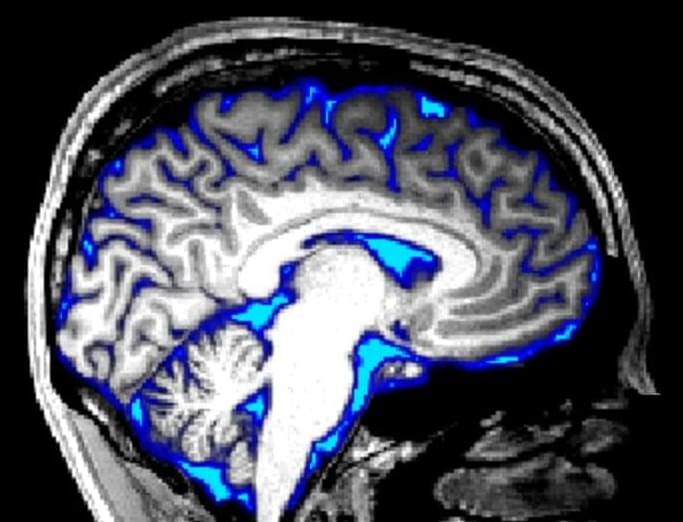
Researchers at Boston University, U.S. report that the flow of cerebrospinal fluid in the brain is linked to waking brain activity. Led by Stephanie Williams, and publishing in the open access journal PLOS Biology on March 30, the study demonstrates that manipulating blood flow in the brain with visual stimulation induces complementary fluid flow. The findings could impact treatment for conditions like Alzheimer’s disease, which have been associated with declines in cerebrospinal fluid flow.
Just as our kidneys help remove toxic waste from our bodies, cerebrospinal fluid helps remove toxins from the brain, particularly while we sleep. Reduced flow of cerebrospinal fluid is known to be related to declines in brain health, such as occur in Alzheimer’s disease. Based on evidence from sleep studies, the researchers hypothesized that brain activity while awake could also affect the flow of cerebrospinal fluid. They tested this hypothesis by simultaneously recording human brain activity via fMRI and the speed of cerebrospinal fluid flow while people were shown a checkered pattern that turned on and off.
Researchers first confirmed that the checkered pattern induced brain activity; blood oxygenation recorded by fMRI increased when the pattern was visible and decreased when it was turned off. Next, they found that the flow of cerebrospinal fluid negatively mirrored the blood signal, increasing when the checkered pattern was off. Further tests showed that changing how long the pattern was visible affected blood and fluid in a predictable way, and that the blood-cerebrospinal fluid link could not be accounted for by only breathing or heart rate rhythms.

















